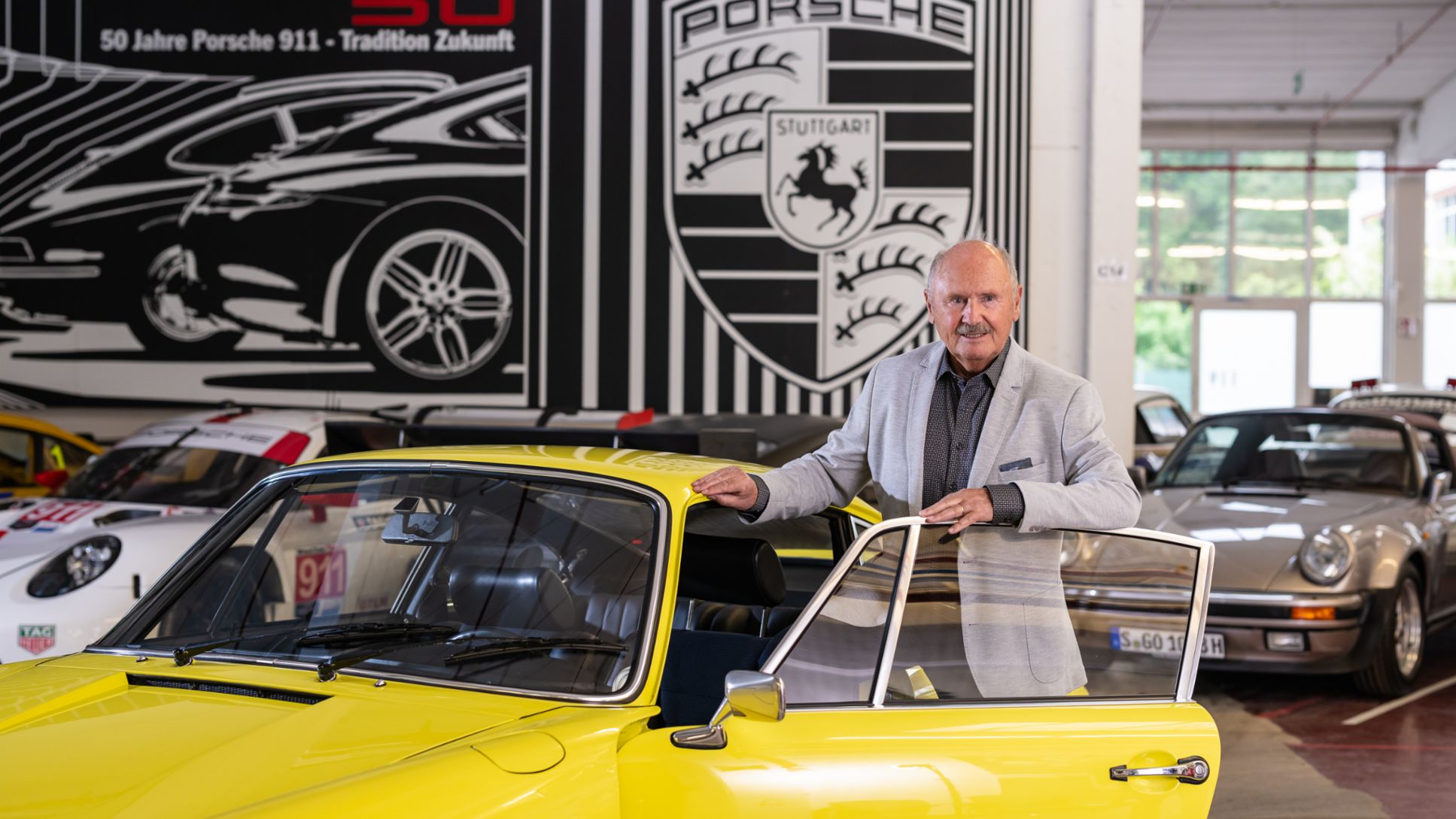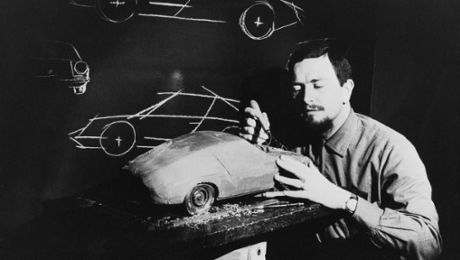Hermann Burst began his career in 1967 as a graduate engineer for the Research Institute of Automotive Engineering and Vehicle Engines (FKFS) at the University of Stuttgart. In the wind tunnel for experimental aerodynamics, he investigated, among other things, the airflow of Porsche vehicles and in 1968 met the company’s racing boss Peter Falk.
Falk was looking for an aerodynamics engineer to make Porsche’s racing cars even faster. In January 1969, at the age of 28, Burst started working in Porsche’s motorsport department, and set about improving the aerodynamics of the 917, 917 Can Am, 908-03 and 908-02 long-tail models. Around 1972 he took up the role of ‘Head of Bodywork Testing, Series and Third-Party Development Projects’ in vehicle development. Computer simulations had yet to exist, but fifth-scale and quarter-scale models were used in the wind tunnel. There, the engineers looked at air resistance, lift, wind noise and the way a vehicle kicks up dirt that then sticks to it.
At the beginning of the 1970s, Hermann Burst and his team were given the task of looking into the lift of the Porsche 911. Together, they invented the rear spoiler, better known as the ‘ducktail’ on the 911 Carrera RS 2.7. Thereafter, he continued to work on shapes that matched the basic body of a 911, that blended in harmoniously yet were immediately recognisable as a new evolutionary stage of an existing 911 body. This resulted in the creation of the rear spoiler that would later be referred to as the ‘whale fin’. Hermann Burst and his team gave the Turbo balanced aerodynamics, which, in combination with the front spoiler, meant that even high-speed performance could be achieved without the car behaving skittishly.
For the aerodynamics expert Hermann Burst, the feeling of the Turbo was comparable to enhancing the basic performance of an engine and coaxing out hidden reserves. Family man Burst looks back fondly on a weekend with a Turbo test model. A lot of the cars on the roads in the 1970s had a power output between 60 and 90 PS, whereas he was able to enjoy the enormous power of the 911 Turbo. Fifty years later, Hermann Burst still remembers exactly what it felt like at the time. He and the Turbo had an immediate bond.
Until 1992, Burst worked as the ‘Head of Bodywork Development’ at Porsche in Weissach.
CV
| 1.10.1940 | Birth |
| 1969 | Race department specialist, aerodynamics department for 917, 908/03 and series production vehicles |
| 1980's | Head of Body Development |
| 1992 | Leaving PAG |
| 2006 | Retirement |


